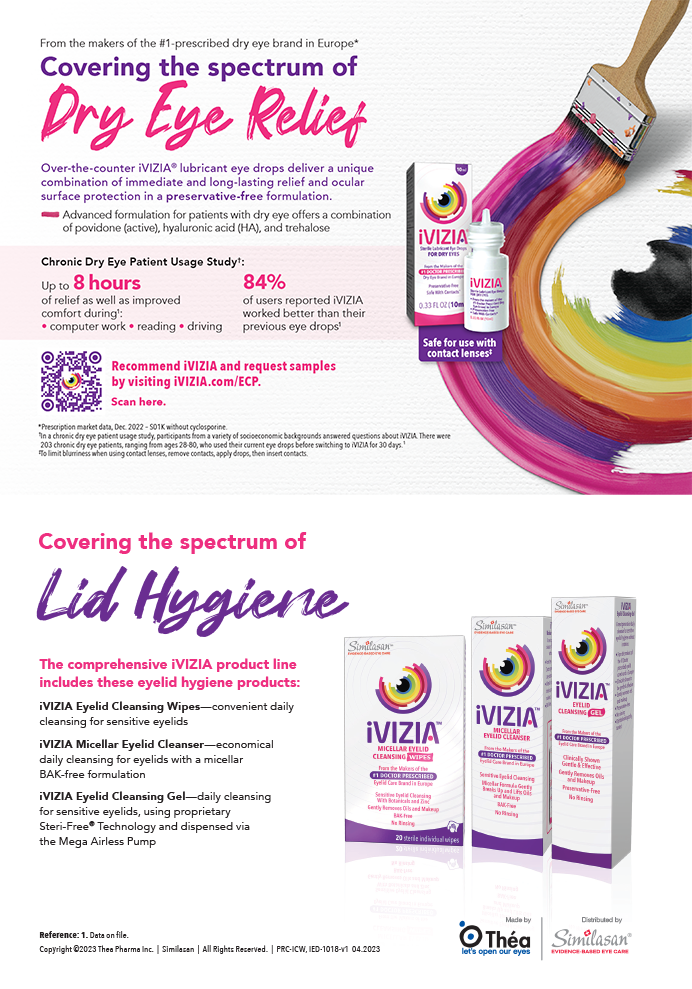
Abbott Vision launched a national campaign in May 2015 to reinvigorate the LASIK market and draw in more potential patients. As of May 2016, we have driven nearly 1.3 million unique visitors to the website, Backinfocus.com, and nearly 130,000 of them have searched for a local doctor on our site. Through this success, we have been able to share credible, educational, and well-balanced content about LASIK as well as provide information to consumers about eye care in general. The site experienced significant increases in traffic when our messaging reached certain digital marketing channels. This article shares which forms of online marketing most increased our outreach so that you can apply this information to your practice as well.
ONLINE MARKETING
Online strategy can include a variety of focus areas. One key is search marketing that reaches an audience actively looking for information. Search marketing includes search engine optimization (SEO) and search engine marketing (SEM).
SEO focuses on optimizing your online presence so that, when patients go online to search for a doctor or for information, they find you. To facilitate search inquiries, optimize your website with pages, relevant titles, meta tags, and meta descriptions. Fill your website, especially the homepage, with informative and interesting content that patients need or want. Sites get credit from search engines for their relevance and ease of use.
SEO is like a marathon and takes some time to yield results. SEM is more like a sprint and provides immediate success. Search ads appear on the results page, and the process of managing SEM for optimal results can be quite complex. A good agency partner or consultant can help with search marketing.
Display advertising includes banners, videos, and more on websites that reach the intended audience. We include customized partnerships with vision care sites such as AllAboutVision.com. Another tactic is mobile advertising, which we find can be especially effective with the use of geo fencing, a technique that uses the global positioning system chip on most mobile devices to target customers in a certain area.
SOCIAL MEDIA
Social media platforms are particularly valuable for drawing potential patients to your website. Social media can be an extremely effective marketing tool if content is geared toward the right audience. Our social strategy is focused on two platforms—Facebook, because it is the highest-volume and highest-penetration social platform, and Tumblr, because it is a site frequented by Millennials, one of our target consumer groups for LASIK. Our Facebook page, Vision Correction Connection, allows us to share content and engage with potential patients. Similarly, Tumblr, a microblogging website, provides the opportunity to offer content designed to be sharable, provided in the right tone, and of interest to potential LASIK patients. Our Tumblr page eyeful.xyz is a good example of the right content and right tone for the right audience. Both social platforms allow potential patients to become familiar with doctors and their practices by allowing them to build a brand for themselves.
Facebook and Tumblr platforms can be boosted through organic and paid reach. The term organic reach refers to the likes, shares, reactions, and comments that occur when readers naturally engage with a post and their friends see these interactions. Paid reach includes paid advertisements and post boosts that can help draw in specific demographics and lead them back to your website or social media page. Organic reach on Facebook can be increased by determining which posts and content engage readers and posting more of that content. Likewise with Tumblr, organic reach occurs when readers reblog and share a post, comment, or otherwise engage with the content. Paid reach is available through content syndication, which posts headlines to the Internet and leads readers back to the Tumblr page to read that content.
ATTRIBUTION MODELS
Understanding which methods are the most effective can be difficult, but there are tools to help. There are two main types of attribution models: first touch, which tracks the first advertisement a potential patient sees, and last touch, which tracks the last advertisement seen before a patient reaches you. Mathematical modeling can help with a multitouch attribution approach to determine true success levels for the different ad placements in an integrated marketing campaign. Advertising success attribution is probably the biggest area of improvement for integrated marketing campaigns.
CONCLUSION
Social media marketing can be daunting, because the rate of decay for messaging is high and new content constantly needs to be added. Pages on these social platforms must be managed and maintained regularly in order to nurture and grow the community, answer questions that come in and engage readers, and keep consumers moving along in their journey toward LASIK. It can be advantageous to employ a dedicated professional to manage online marketing and maintain social media sites or to outsource the task to an agency with expertise in this area.
Viru Parlikar
• director of global consumer marketing in the refractive marketing business at Abbott Medical Optics
• virendra.parlikar@abbott.com




